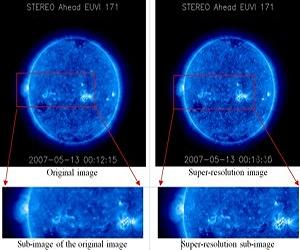
So great is the wealth of data about the Sun now being sent back by space missions such as SOHO, STEREO and the Solar Dynamics Observatory (SDO) that scientists back on Earth can struggle to keep pace.
Every few years, there comes along a heartening piece of research that will have us believe global warming is not our cross to bear. One such happy theory that did the rounds a few years ago attributed rising temperatures on Earth to sunspots—cool, dark regions of high magnetic energy that occur periodically on the Sun and are accompanied by intense solar activity—and came with the more suspect corollary that soon, a dip in solar activity will cause a mini ice age. As it turns out, even as parts of India prepare for higher temperatures, solar activity is at a 100-year low and, according to experts, it is very unlikely to induce a cold wave.
Since the mid-19th century, astronomers have known that sunspots, which often have a magnetic field 10,000 times that of the Earth, follow an 11-year cycle. As it waxes to its peak, a cycle may be marked by as many as a hundred sunspots, violent explosions known as solar flares, and mass ejections of plasma from the Sun’s atmosphere. As recently as in February, two years into the new solar cycle known as cycle 24 kicked off, a giant solar flare—the largest in four years—and a mass ejection triggered fears of a ‘solar storm’ that could cause damage to the tune of $2 trillion. “A large solar flare can release energy a thousand billion times that of an atom bomb and such a major discharge, which also hurls accelerated particles into space, can disrupt the Earth’s ionosphere and its magnetic field, interfering with radio and satellite communications and causing power grids to trip. Each sunspot cycle varies in intensity—a stronger cycle will have more such events,” says Arnab Rai Choudhuri, a professor at the Department of Physics, Indian Institute of Science, and an authority on sunspots, who has developed a theoretical model that predicts the intensity of a sunspot cycle. And the present cycle, he says, will be the weakest in a long time.
To combat this data overload, scientists from the Visual Computer Centre at Bradford University are developing advanced imaging tools to help scientists visualise what's happening at the Sun, make sense of the data and predict the extreme solar activities that could affect our life here on Earth. Dr Rami Qahwaji will present the tools at the RAS National Astronomy Meeting at Llandudno.
"These techniques are very important," said Qahwaji.
"We are now able to process images on the ground so that the resolution is double that of the source images. Most satellites are limited by the amount of data that they can store and download. The ability to turn medium resolution images into high resolution in the lab means that satellites can take smaller images but more frequently, which will help with real-time monitoring of the Sun and predicting space weather. It also means that scientists can zoom in on the features that interest them, without downloading huge files. There is lot of potential for this technology. For example, it can help overcome small information loss caused by noise and can be used to generate high-definition 3D images."
In addition to enhancing image resolution, the Bradford group has been developing 2- and 3-dimensional visualisation tools to help scientists understand the complex processes that drive solar activity.
By processing multiple of solar images, they have created automated maps that summarise solar activity over an entire solar rotaion and models of magnetic field lines, generating 3-D visualisations of magnetic loop locations on the Sun's rotating globe.
"This is the first time that SDO data has been used to create these synoptic maps and we have also created the first automated 3-D model of magnetic loops," said Qahwaji. "As well as being a useful tool for scientists, we hope that the public will find the 3-D model an interesting way of finding out what's happening on the Sun."
The group is now collaborating with Trinity College Dublin on the development of a new flares predictions system called SMART-ASAP. This computerised system analyses recent images to extract physical properties from solar magnetic features that are analysed further using artificial intelligence techniques to predict whether extreme solar activities will occur.
"Extreme solar activities, such as flares, can affect our life on Earth since we rely more and more on space-based communication and extended power distribution systems, both of which are vulnerable to such activities. The satellite and electrical power industries generate hundreds of billions of dollars in annual revenue and, if we are to protect these assets, we need accurate solar weather forecasting," said Qahwaji.
No comments:
Post a Comment